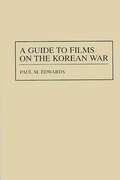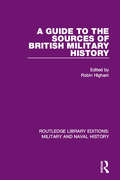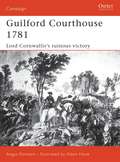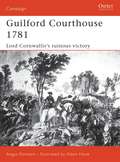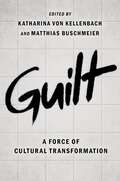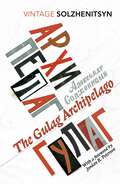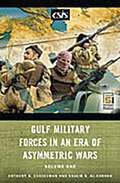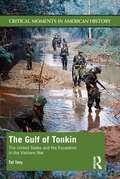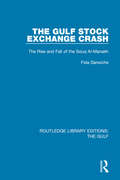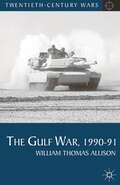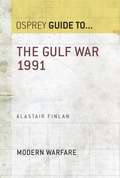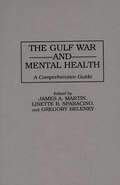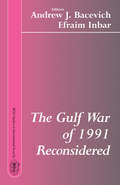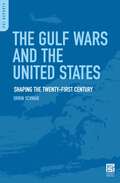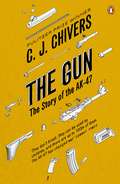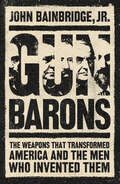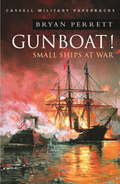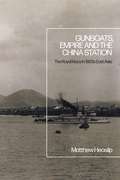- Table View
- List View
A Guide to Films on the Korean War (Bibliographies and Indexes in American History #Vol. 35)
by Paul M. EdwardsWritten by a knowledgeable film critic and Korean War scholar, this is the only guide exclusively devoted to the study of Hollywood and television films based on the Korean War, 1950-1953. It opens with eight short essays, discussing the appeal of the war film genre, government and filmmaker cooperation, the isolation of Korean War films from other war films, why John Wayne didn't make a Korean War film, the other actors who did, the plots of Korean War films, television and Korean War films, and the myths resulting from films. Eighty-four films are then discussed in alphabetically arranged entries.The entries include production unit, color status, producer, director, screenwriter, actors and actresses, movie length, and the author's numerical rating of the film. The commentary places each film within the context of other war films, the Korean War, trends in Hollywood, and the social and political realities of the United States. The films also are listed chronologically. Producers, directors, screenwriters, actors, and actresses are indexed by responsibility and are included in the general index. The book also provides a list of 109 documentary films available for public viewing.
A Guide to the Sources of British Military History (Routledge Library Editions: Military and Naval History)
by Robin HIghamDesigned to fill an overlooked gap, this book, originally published in 1972, provides a single unified introduction to bibliographical sources of British military history. Moreover it includes guidance in a number of fields in which no similar source is available at all, giving information on how to obtain acess to special collections and private archives, and links military history, especially during peacetime, with the development of science and technology.
A Guide to the Sources of British Military History (Routledge Library Editions: Military and Naval History)
by Robin HighamDesigned to fill an overlooked gap, this book, originally published in 1972, provides a single unified introduction to bibliographical sources of British military history. Moreover it includes guidance in a number of fields in which no similar source is available at all, giving information on how to obtain acess to special collections and private archives, and links military history, especially during peacetime, with the development of science and technology.
Guilford Courthouse 1781: Lord Cornwallis's Ruinous Victory (Campaign)
by Adam Hook Angus KonstamBy the Spring of 1781, the American Revolutionary War had dragged on for almost six years and the outcome still hung in the balance. When the British commander Lord Cornwallis launched his invasion of North Carolina in early 1781, his objective was to destroy General Nathaniel Greene's American army. At Guilford Courthouse on 15 March 1781 the two armies met. In a desperately hard-fought battle the small but professional British army succeeded in fighting its way through three separate lines of American troops – but at a dreadful cost. Cornwallis lost over a quarter of his command. When news of the 'victory' reached Britain, a politician remarked; 'Another such victory would ruin the British army'.
Guilford Courthouse 1781: Lord Cornwallis's Ruinous Victory (Campaign #109)
by Angus Konstam Mr Adam HookBy the Spring of 1781, the American Revolutionary War had dragged on for almost six years and the outcome still hung in the balance. When the British commander Lord Cornwallis launched his invasion of North Carolina in early 1781, his objective was to destroy General Nathaniel Greene's American army. At Guilford Courthouse on 15 March 1781 the two armies met. In a desperately hard-fought battle the small but professional British army succeeded in fighting its way through three separate lines of American troops – but at a dreadful cost. Cornwallis lost over a quarter of his command. When news of the 'victory' reached Britain, a politician remarked; 'Another such victory would ruin the British army'.
Guilt: A Force of Cultural Transformation
by Katharina Von Kellenbach Matthias BuschmeierAcross the globe guilt has become a contentious issue in discussions over historical accountability and reparation for past injustices. Guilt has become political, and it assumes a highly visible place in the public sphere and academic debate in fields ranging from cultural memory, to transitional justice, post-colonialism, Africana studies, and the study of populist extremism. This volume argues that guilt is a productive force that helps to balance unequal power dynamics between individuals and groups. Moreover, guilt can also be an ambivalent force affecting social cohesion, moral revolutions, political negotiation, artistic creativity, legal innovation, and other forms of transformations. With chapters bridging the social sciences, law, and humanities, chapter authors examine the role and function of guilt in society and present case studies from seven national contexts. The book approaches guilt as a generative and enduring presence in societies and cultures rather than as an oppressive and destructive burden that necessitates quick release and liberation. It also considers guilt as something that legitimates the future infliction of violence. Finally, it examines the conditions under which guilt promotes transformation, repair, and renewal of relationships.
Guilt: A Force of Cultural Transformation
by Katharina Von Kellenbach Matthias BuschmeierAcross the globe guilt has become a contentious issue in discussions over historical accountability and reparation for past injustices. Guilt has become political, and it assumes a highly visible place in the public sphere and academic debate in fields ranging from cultural memory, to transitional justice, post-colonialism, Africana studies, and the study of populist extremism. This volume argues that guilt is a productive force that helps to balance unequal power dynamics between individuals and groups. Moreover, guilt can also be an ambivalent force affecting social cohesion, moral revolutions, political negotiation, artistic creativity, legal innovation, and other forms of transformations. With chapters bridging the social sciences, law, and humanities, chapter authors examine the role and function of guilt in society and present case studies from seven national contexts. The book approaches guilt as a generative and enduring presence in societies and cultures rather than as an oppressive and destructive burden that necessitates quick release and liberation. It also considers guilt as something that legitimates the future infliction of violence. Finally, it examines the conditions under which guilt promotes transformation, repair, and renewal of relationships.
The Gulag Archipelago
by Aleksandr SolzhenitsynWITH A NEW FOREWORD BY JORDAN B. PETERSON'Solzhenitsyn’s masterpiece...The Gulag Archipelago helped create the world we live in today' Anne ApplebaumTHE OFFICIALLY APPROVED ABRIDGEMENT OF THE GULAG ARCHIPELAGO VOLUMES I, II & III A vast canvas of camps, prisons, transit centres and secret police, of informers and spies and interrogators but also of everyday heroism, The Gulag Archipelago is Aleksandr Solzhenitsyn's grand masterwork. Based on the testimony of some 200 survivors, and on the recollection of Solzhenitsyn's own eleven years in labour camps and exile, it chronicles the story of those at the heart of the Soviet Union who opposed Stalin, and for whom the key to survival lay not in hope but in despair. A thoroughly researched document and a feat of literary and imaginative power, this edition of The Gulag Archipelago was abridged into one volume at the author's wish and with his full co-operation.'[The Gulag Archipelago] helped to bring down an empire. Its importance can hardly be exaggerated' Doris Lessing, Sunday Telegraph
Gulf Military Forces in an Era of Asymmetric Wars [2 volumes]: [2 volumes] (Praeger Security International)
by Khalid Al-Rodhan Anthony H. CordesmanThe significance of the Persian Gulf to international peace and security and to the global energy market cannot be overstated. Events such as the attacks of September 11 and the rise in energy demand and prices have only highlighted the importance of stability in the Gulf to the health of the global economy. This book demonstrates that the nature of military and political threats in the Gulf states (Bahrain, Saudi Arabia, Iran, Iraq, Qatar, Yemen, and the UAE) has shifted during the past three years. Although the threat from Saddam Hussein's Iraq, which produced three recent, major conventional wars-Iran-Iraq (1980-88), Persian Gulf (1990), and Iraq (2003)-has largely disappeared, it has been replaced by concerns over the asymmetric warfare conducted by terrorist organizations and over the proliferation of WMDs by both states and terrorists. These developments are affecting the defense planning and strategic posture of each country, and this book analyzes developments in the force structures of the Gulf states and their ability to deal with this shift in the nature of the threat.The military and security forces of the Gulf states must evolve to adapt to the changing nature of the threat and take into account the risk of the Iraqi insurgency and the uncertainty surrounding Iraq's future. The key areas covered in this book include the internal terrorist threat to Saudi Arabia and the Gulf states; the impact of Iran's nuclear program and the risk it poses to energy and internal security in the Gulf area; and border disputes within the region that could develop into conflict. In addition, the book studies the impact of the Iraq War on regional security and the fear of the insurgency spilling over into neighboring states. Cordesman and Al-Rodhan demonstrate a shift toward using internal security services to deal with the threat of extremism and asymmetric warfare. They also suggest that high energy prices and export revenues provide the Gulf countries the opportunity to upgrade their military forces and deal with their undercapitalization as a result of low oil prices in the 1990s. Moreover, they insist that the future of Iraq, the strategic and nuclear posture of Iran, and the terrorist threat will remain major risks and uncertainties in the short to medium run.
The Gulf of Tonkin: The United States and the Escalation in the Vietnam War (Critical Moments in American History)
by Tal TovyThe Gulf of Tonkin: The United States and the Escalation in the Vietnam War analyzes the events that led to the escalation of the conflict in Vietnam and increased American involvement. On August 4, 1964, the captains of two American destroyers, the USS Maddox and the USS Turner Joy, reported that their ships were being attacked by North Vietnamese torpedo boats. This report came on top of a previous report by the captain of the USS Maddox, indicating that he had been attacked by torpedo boats two nights earlier. The text introduces readers to the historiography of these incidents and how the perception of the events changed over time. The attacks, which were collectively called the Gulf of Tonkin incident, are presented in the context not only of the Vietnam War but also of the Cold War and U.S. government powers, enabling students to understand the events’ full ramifications. Using essential primary documents, Tal Tovy provides an accessible introduction to a vital turning point in U.S. and international affairs. This book will be useful to all students of the Vietnam War, American military history, and foreign policy history.
The Gulf of Tonkin: The United States and the Escalation in the Vietnam War (Critical Moments in American History)
by Tal TovyThe Gulf of Tonkin: The United States and the Escalation in the Vietnam War analyzes the events that led to the escalation of the conflict in Vietnam and increased American involvement. On August 4, 1964, the captains of two American destroyers, the USS Maddox and the USS Turner Joy, reported that their ships were being attacked by North Vietnamese torpedo boats. This report came on top of a previous report by the captain of the USS Maddox, indicating that he had been attacked by torpedo boats two nights earlier. The text introduces readers to the historiography of these incidents and how the perception of the events changed over time. The attacks, which were collectively called the Gulf of Tonkin incident, are presented in the context not only of the Vietnam War but also of the Cold War and U.S. government powers, enabling students to understand the events’ full ramifications. Using essential primary documents, Tal Tovy provides an accessible introduction to a vital turning point in U.S. and international affairs. This book will be useful to all students of the Vietnam War, American military history, and foreign policy history.
The Gulf Stock Exchange Crash: The Rise and Fall of the Souq Al-Manakh
by Fida DarwicheThe collapse of Souq Al-Manakh in Kuwait in August 1982 was the most spectacular financial crash of recent years. The market had developed as a parallel stock exchange dealing in the shares of Gulf companies not resident in Kuwait. Fuelled by manic speculation, the market grew at a phenomenal rate throughout 1981 and early 1982. Inexperienced investors gambled huge sums on the shares of shell companies promoted largely for share speculation. At the height of the market US$92 billion was outstanding on nearly 30,000 postdated cheques, the usual form of payment used in the market. The financial crisis created by the collapse of the Souq Al-Manakh threatened the stability of Kuwait. The government was forced to intervene and absorb the major part of the loss. This book, first published in 1986, traces the growth of the stock market and analyses its collapse. It also discusses in detail the wider impact of this debacle on the economic life of the Gulf.
The Gulf Stock Exchange Crash: The Rise and Fall of the Souq Al-Manakh
by Fida DarwicheThe collapse of Souq Al-Manakh in Kuwait in August 1982 was the most spectacular financial crash of recent years. The market had developed as a parallel stock exchange dealing in the shares of Gulf companies not resident in Kuwait. Fuelled by manic speculation, the market grew at a phenomenal rate throughout 1981 and early 1982. Inexperienced investors gambled huge sums on the shares of shell companies promoted largely for share speculation. At the height of the market US$92 billion was outstanding on nearly 30,000 postdated cheques, the usual form of payment used in the market. The financial crisis created by the collapse of the Souq Al-Manakh threatened the stability of Kuwait. The government was forced to intervene and absorb the major part of the loss. This book, first published in 1986, traces the growth of the stock market and analyses its collapse. It also discusses in detail the wider impact of this debacle on the economic life of the Gulf.
The Gulf War, 1990-91 (Twentieth Century Wars)
by William Thomas AllisonIn August 1990, Saddam Hussein's Iraqi forces boldly invaded and occupied neighboring Kuwait. It was a move that shocked the world and threatened the interests of those countries, such as the USA and the nations of Europe, dependent on oil from the Middle East. The ensuing Gulf War signaled, for many, a new dawn in warfare: one based upon lethal technology, low casualties, and quick decisive victory.Incorporating the latest scholarship, William Thomas Allison provides a concise overview of the origins, key events and legacy of the first Gulf War, as well as the major issues and debates. Allison also examines the relevance of this war to other twentieth-century conflicts and the ongoing situation in the region.
The Gulf War 1991 (Guide to...)
by Professor Alastair FinlanThe Gulf War of 1991 heralded a new type of warfare that was characterised by astonishing speed and high technology with remarkably low numbers of casualties amongst the coalition forces. Just under a million coalition personnel were deployed to the Gulf region to face a variety of threats from extreme temperatures to weapons of mass destruction (biological, chemical and suspected nuclear) and a formidable Iraqi occupation force. This book assesses the defensive Operation Desert Shield (the build up of coalition forces) and the offensive Operation Desert Storm (the liberation of Kuwait) as well as the key personalities on both sides.
The Gulf War and Mental Health: A Comprehensive Guide
by G L Belenky James Martin Linette SparacinoThe brief, successful Gulf War resulted in few casualties, but there were still recognizable pockets of trauma. This study examines the Mental Health Services available in the theater of operations, the preparations made to train the soldiers for the stress of combat, and details of how they coped with the experience of combat. It assesses the Gulf War in terms of mental health. Some attention is also given to the phenomenon named Gulf War Syndrome. The authors conclude that United States Military Forces were not prepared for the mental health requirements of combat.
The Gulf War of 1991 Reconsidered (Besa Studies In International Security)
by Andrew J. Bacevich Efraim InbarThe Gulf War of 1991 Reconsidered subjects one of the formative events of the post-Cold War era and a watershed in Middle Eastern international politics to a comprehensive reassessment. Condidering events from Arab, Israeli and American view points, the book examines the Gulf War's historical origins, conduct and legacy.
The Gulf War of 1991 Reconsidered
by Andrew J. Bacevich Efraim InbarThe Gulf War of 1991 Reconsidered subjects one of the formative events of the post-Cold War era and a watershed in Middle Eastern international politics to a comprehensive reassessment. Condidering events from Arab, Israeli and American view points, the book examines the Gulf War's historical origins, conduct and legacy.
The Gulf Wars and the United States: Shaping the Twenty-First Century (PSI Reports)
by Orrin SchwabSchwab's work is five-part analysis of US policy and strategy in the Persian Gulf from 1990-2003. He begins the work by analyzing the prominence of the Persian Gulf in US global strategic thinking during the last decade of the Cold War. By that time, gulf oil had secured a paramount place in the minds of the Reagan and Bush administrations. Part two dissects the relationship that individuals and regional governments in the Persian Gulf shared with the US. Here, Schwab also examines US perceptions of those entities and demonstrates how they helped shape the policies of the US and define the status of those nations in the eyes of US policymakers. When Saddam Hussein invaded Kuwait in 1990, the paradigm shifted dramatically. Part three examines US decision-making in the period immediately after that invasion. Schwab demonstrates that while forging a broad coalition to turn back Iraq was a significant diplomatic achievement, the international determination that defined the conflict in 1990-1991 eroded and gave way to a cumbersome policy of containment. That policy ultimately resulted in the dissolution of the coalition forged by the first Bush administration and burdened his successors as they struggled to achieve the longstanding goal of creating stability throughout the region. Part four explores the efforts of the Clinton and second Bush administrations in the Gulf. Saddam was one of the primary concerns of the Clinton administration, but so too were al-Qaeda, North Korea, China, and especially Yugoslavia. Indeed, his was the first administration to truly attempt to deal with these kinds of problems in a post-Cold War world. Despite their differences, there was a tremendous amount of continuity in the policies pursued by Clinton and George W. Bush. September 11 changed that, however, as Schwab chronicles in part five. In that section he explores how the current administration's adoption of a more proactive strategy of retaliation and preventative war has given rise to a new national security regime increasingly designed to fight asymmetric war while eliminating perceived threats to our national security and interests.Schwab's work is five-part analysis of US policy and strategy in the Persian Gulf from 1990-2003. He begins the work by analyzing the prominence of the Persian Gulf in US global strategic thinking during the last decade of the Cold War. By that time, gulf oil had secured a paramount place in the minds of the Reagan and Bush administrations. Part two dissects the relationship that individuals and regional governments in the Persian Gulf shared with the US. Here, Schwab also examines US perceptions of those entities and demonstrates how they helped shape US policy and define the status of those nations in the eyes of US policymakers. When Saddam Hussein invaded Kuwait in 1990, the paradigm shifted dramatically. Part three examines US decision-making in the period immediately after that invasion. Schwab demonstrates that while forging a broad coalition to turn back Iraq was a significant diplomatic achievement, the international determination that defined the conflict in 1990-1991 eroded and gave way to a cumbersome policy of containment. That policy ultimately resulted in the dissolution of the coalition forged by the first Bush administration and burdened his successors as they struggled to achieve the longstanding goal of creating stability throughout the region. Part four explores the efforts of the Clinton and second Bush administrations in the Gulf. Saddam was one of the primary concerns of the Clinton administration, but so too were al-Qaeda, North Korea, China, and especially Yugoslavia. Indeed, his was the first administration to truly attempt to deal with these kinds of problems in a post-Cold War world. Despite their differences, there was a tremendous amount of continuity in the policies pursued by Clinton and George W. Bush. September 11 changed that, however, as Schwab chronicles in part five. In that section he explores how the current administration's adoption of a m
The Gun: The Story of the AK-47
by C. J. ChiversThe AK-47, or 'Kalashnikov', is the most abundant and efficient firearm on earth. It is so light it can be used by children. It has transformed the way we fight wars, and its story is the chilling story of modern warfare.C. J. Chivers's extraordinary new book tells an alternative history of the world as seen through these terrible weapons. He traces them back to their origins in the early experiments of Gatling and Maxim, and examines the first appearance of the machine-gun. The quest for ever greater firepower and mobility culminated in the AK-47 at the beginning of the Cold War, a weapon so remarkable that, over sixty years after its invention and having broken free of all state control, it has become central to civil wars all over the world.
Gun Barons: The Weapons That Transformed America and the Men Who Invented Them
by John Bainbridge, Jr.“A dazzling epic of inventors, wars, arms, and men.” – Daniel Mark Epstein, author of The Lincolns: Portrait of a Marriage“Deeply researched, rich in insight, Gun Barons widens our understanding even as it enchants us with its masterful prose.” – Jim Rasenberger, author of Revolver: Sam Colt and the Six-Shooter That Changed America“John Bainbridge, Jr. cuts through the myths, romance, and propaganda to deliver true accounts of inspired drive and monomania, of catastrophic mistakes and vaults of genius.” – Doug J. Swanson, author of Cult of Glory: The Bold and Brutal History of the Texas Rangers“This book proves that guns have shaped, and continue to shape, our world.” – Howard E. Wasdin, author of Seal Team Six: The Incredible Story of an Elite Sniper“A compelling tale of action and ingenuity.” – James Grant, author of John Adams: Party of One***It’s the nineteenth century. As America prepares for civil war, five men living within ninety miles of one another will change the course of history. The invention and refinement of the repeating firearm—the precursor to today’s automatic weapons—means life in America and beyond will never be the same again.In this riveting work of narrative history, veteran reporter John Bainbridge, Jr. vividly brings to life the five charismatic and idiosyncratic men at the heart of the story: the huckster and hard-living Samuel Colt; the cunning former shirt-maker Oliver Winchester; the constant tinkerer Horace Smith; the resilient and innovative businessman Daniel Wesson; and the skinny abolitionist Christopher Spencer. As the men competed ferociously, each trying to corner the market for repeating weapons, invention and necessity collided in a perfect storm: America was crashing violently towards furious sectarianism, irrevocable tensions, and, of course, bloodthirsty war.Though capable of firing many times without reloading, astonishingly, the new guns faced a government backlash for using too much ammunition. Sold directly to soldiers, sometimes just as they were walking into battle, they quickly became coveted possessions, both during the Civil War and in the conquering of the West—and thus America’s romance with personal firearms was born.Wide-ranging and vividly told, this is a gripping story of tenacity, conviction, innovation, and pure heartless greed.
Gun Shy: The True Story of the Army Dog Scared of War
by Alison Stokes Angie McDonellVidar, the army search dog, has spent half his life sniffing out enemy weapons and bombs on the front line of the war in Afghanistan. His keen nose saved the lives of hundreds of soldiers, finding roadside bombs which could have killed British troops. But after two years of loyal service, Vidar became ‘Gun Shy’ – a term used to describe dogs who are frightened of loud noises. Whenever he heard bombs exploding or even the sound of helicopters flying above, he would curl up in the corner, shaking with fear.His army days were numbered… and his future looked uncertain. Until Angie, an army medic who befriended him during her tour of Afghanistan, made it her duty to give him a safe haven at her Welsh home.
Gunboat!: Small Ships At War (Sven Hassel War Classics)
by Bryan PerrettThis is naval action adventure with a difference - thirteen naval engagements in which gunboats won the day against every kind of enemy, large and smallBritain, like other colonial powers, established, controlled and accessed her empire from the seas. It was realised that the preservation of secure trading conditions required armed ships able to operate in shallow coastal and river waters. The gunboat was developed to meet this need: a small, shallow-draft, steam-powered screw or paddle driven vessel, sufficiently fast and manoeuvrable to take the enemy, whether on shore or afloat, by surprise.In this book Bryan Perrett recounts thirteen episodes of exciting gunboat action, ranging from the Burma war in 1824, through two world wars and on to the dramatic escape of the Amethyst down the Yangtze in 1949.
Gunboats, Empire and the China Station: The Royal Navy in 1920s East Asia
by Matthew HeaslipExamining Britain's imperial outposts in 1920s East Asia, this book explores the changes and challenges affecting the Royal Navy's third largest fleet, the China Station, as its crews fought to hold back the changing tides of fortune.Bridging the gap between high level naval strategy and everyday imperial culture, Heaslip highlights the importance of the China Station to the British imperial system, foreign policy and East Asian geopolitics, while also revealing the lived experiences of these imperial outposts. Following their immersion into a new world and the challenges they encountered along the way, it considers how its naval officers were perceived by the Chinese populations of the ports they visited, how the two communities interacted and what this meant at a time of 'peace'. Against the changing nature of Britain's informal empire in the 1920s, Gunboats, Empire and the China Station highlights the complex nature of naval operations in-between major conflicts, and calls into question how peaceful this peacetime truly was.
Gunboats, Empire and the China Station: The Royal Navy in 1920s East Asia
by Matthew HeaslipExamining Britain's imperial outposts in 1920s East Asia, this book explores the changes and challenges affecting the Royal Navy's third largest fleet, the China Station, as its crews fought to hold back the changing tides of fortune.Bridging the gap between high level naval strategy and everyday imperial culture, Heaslip highlights the importance of the China Station to the British imperial system, foreign policy and East Asian geopolitics, while also revealing the lived experiences of these imperial outposts. Following their immersion into a new world and the challenges they encountered along the way, it considers how its naval officers were perceived by the Chinese populations of the ports they visited, how the two communities interacted and what this meant at a time of 'peace'. Against the changing nature of Britain's informal empire in the 1920s, Gunboats, Empire and the China Station highlights the complex nature of naval operations in-between major conflicts, and calls into question how peaceful this peacetime truly was.
